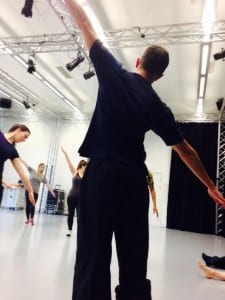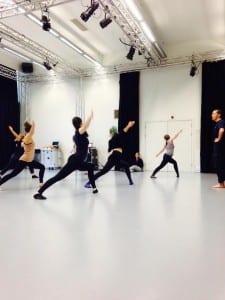In my final blog for the progression of the cohort within their Dance Technique and Performance module, I am going to focus on the assessment overall because I believe there is a lot of progression to evaluate from the beginning of the year through to the final assessment. I could see a very strong development of the clarity of movement within the cohort. At the beginning of the year it felt like there was a lack of understanding in the clarity of the movement, however in the assessment I could see that through projection, focus and effort the clarity of movement was much more apparent. I also thought that the muscular strength in the group had progressed because they were holding their balance in the adage sequence for a lot longer than I had previously seen; I think this might be to do with the pressure of the assessment. The posture and alignment was clearer in the assessment because I think the dancers were focusing more on performing the movement. This made their posture sit more naturally which was more accurate for the posture and alignment required. “Alignment is often associated with more effort. In fact, the opposite actually holds true” (Franklin, 2014, 119). This quote shows that the more effort you put into correcting your posture; it actually does the opposite and causes hindrance to the improvement of your posture.
I still feel like there was room for improvement in challenging their movement. I could see that as a group the dancers were scared to take themselves off balance and this is what Robert and Alice wanted to see them doing. I observed that they would rather use their personal kinesthetic space instead of exploring the general space. Therefore, this is something I believe the group still needs to work on. Overall, I could see so much progression through the twelve weeks and it was interesting to observe the developments from class to class, and from dancer to dancer. I really enjoyed watching the two techniques; Cunningham and Release performed along side each other within the technique assessment. It made me realise how different the techniques were and how well the cohort encapsulated the requirements for both techniques.


